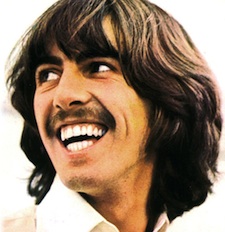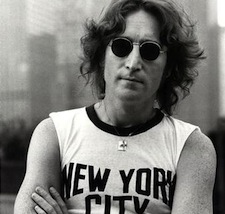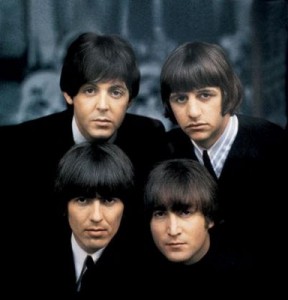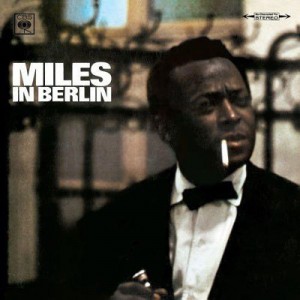Yesterday was the 40th Anniversary of Paul McCartney publicly acknowledging that The Beatles had, indeed, broken up. The exact point where that happened is probably just about anybody’s guess, but April 10th, 1970 was at least a moment where the pop world could start coming to terms with the official breakup. I wouldn’t ever be alice in a world with The Beatles playing together, and I remember the news of John Lennon being shot when I was 5. I also remember the REALLY sad ‘Free As A Bird’ that was released with the first Beatles Anthology album (the virtual Beatles reunion that reeked of Jeff Lynne production standards… ugh, that was horrible). And of course – last year’s remasters (stunning) and the Guitar Hero version of the Beatles. The virtual Beatles all playing ‘Back In The U.S.S.R.’ together especially made me chuckle. I remember joking to my friend Colin ‘so – to win do you have to break the band up by the time you are learning the licks for Abbey Road?’.
Tonight’s rips are mostly in honor of what mostly happened near the end and after The Beatles’ official career. Among the re-issues and re-masters of the past few years, the ‘cleaning-up’ (or rather the ‘de-Spectoring’) of ‘Let It Be’ has been a high point for me. ‘Let It Be… Naked’ is a beautiful disc. And while the Phil Spector production of the original is just that (and can be appreciated in all that Phil Spector crazy), hearing some of these songs in more of a ‘Get Back’ form is amazing. I even like ‘The Long And Winding Road’ now (a song that basically just bugged me before). One of my favorite George songs also stands out… ‘I Me Mine’ is a great song on both versions, but the ‘Naked’ version feels cleaner to me. Which leads to ‘All Things Must Pass’.
George Harrison’s first solo album out of the gates. After years of only being allowed 3 songs per Beatles album (a number written into their contracts) and with the Beatles often not taking his song writing very seriously (hence ‘Only A Northern Song’), George had lots of material stored up… and this 3 LP release showed it. George’s songs tended to be the most beautiful ones in my opinion, and this album shows that ‘Here Comes The Sun’ and ‘While My Guitar Gently Weeps’ are not songwriting luck. ‘My Sweet Lord’ is a stunning song, and I wouldn’t be surprised if it was written around the same time as ‘Here Comes The Sun’. During my masters degree I took a class on music theory and rock music and we read a great article about ‘Here Comes The Sun’ and how the song brightens in timbre (like a sunrise) as the song goes on, and ‘My Sweet Lord’ seems to have a similar feeling to it. At the same time there seems to be an argument in the song, bringing Eastern philosophy and religion into closer contact with Western philosophy and religion (certainly something the Beatles did in the mid-60s, though this is something that seemed to stay much more visible with George throughout his life).
The Lennon compilations also seem to take the trajectory that he and Yoko were on by the end of The Beatles and extends it. The Phil Spector sound (if not his actual production) are all over the earlier tracks. John, always the 50s rocker (in comparison to Paul’s tin-pan alley influences, George’s blues / folk influences and Ringo’s, well, Ringo-ness) also comes through. There is plenty of homage in John Lennon’s work (his recording of ‘Stand By Me’ being one of the most perfect covers in rock history in my opinion), and there is an amazing amount personal expression that had already been a long part of his songwriting (‘Glass Onion’ and ‘The Ballad of John and Yoko’ being two obvious examples of this). ‘Beautiful Boy’, ‘Watching The Wheels’, ‘Dear Yoko’, ‘Oh Yoko’ and ‘Cold Turkey’ all show his inner love and inner demons as well. Through his music, John may have been the most intimately known of the Beatles. His politics were very public. His relationships were very public. And his problems were very public. Perhaps this is part of the reason his shooting is something that sticks out in my mind. Not because at 5 years old I knew anything about this, but because when he was killed, such a sizable portion of the public felt like they were losing someone that they actually knew, that even a 5 year old kid could see that someone that his family seemed to know had just died.
I actually only have one Paul McCartney album (which I actually forgot had until just this moment – so I didn’t rip it yet) and don’t have any of Ringo’s. With Paul, his solo work (and even a good chunk of his Beatles stuff post ’67) just doesn’t interest me. This isn’t an absolute distaste… ‘Back In The U.S.S.R.’ is one of the best rockers around, but come the musical revolution I think it would be hard not to take the guy who wrote, performed and continued to perform ‘O-bla-di O-bla-da’ and not make him stand against the wall. And as for Ringo, inspire of the fact that Ringo has long been my favorite Beatle, I think he strikes me most as performer. If there was a Beatle that probably suffered most from the cessation of touring after ‘Revolver’, I think it was probably Ringo. His constant tours with his ‘All-Star Band’ are something that I still hope to catch sometime. But every time I’ve heard a Ringo Starr studio track, it seems like what would make them special is missing. ore then anyone else in the group, I get the sense that Ringo’s ego fed off surrounding himself by great musicians, and he just kept doing it all the way into the present.
Heading back to the early 60’s now, the last set of discs I ripped tonight were the Beatles BBC Sessions discs (and for me, this is it on the Beatles front – I never picked up the Anthologies, preferring to respect the idea that what was released was released for a reason, and digging up alternate and un-perfect versions of songs by a group that crafted the modern recording studio would just be un-fun). The BBC Sessions, on the other hand, are the Beatles in the early days, having what sounds like lots of fun. They are on one hand very much rising stars at this point, but at the same time they have already reached a level at stardom at this point that would give them repeated appearances on the BBC (complete with listeners sending in requests for songs). Some of the dialog between the show’s host and The Beatles is kept intact as well, and it is these bits of dialog that I find most entertaining. These cheeky Liverpool youth are having fun, and when they play you get the sense that they are having a good time playing to an audience that isn’t drowning out the music. While the first few albums are pretty close to playing live, actually hearing the Beatles play live is fun. They have a great energy, and they show that they are great performers live. The only other example of this that I can really think of are the films that were shot on the rooftop of Abbey Road for ‘Get Back’ (which became ‘Let It Be’). Again you see them playing as a group and get to hear what they are doing (since the screaming crowds didn’t know to show up) and you can see that these four guys had a very natural musical gift.
Like a few other artists that I have already written about, there isn’t a time in my life that I can remember without also knowing that I knew about The Beatles. My earliest form of ear training was dad asking if I could tell whether it was John or Paul singing a song. So it is an interesting bit of reflection to realize that, 40 years after the ‘official’ break-up, that at 35 I wasn’t alive at all for The Beatles. But that is part of the magic of recordings, isn’t it? Once they are down (in any form), they really do become a time-capsule of sorts. At this moment I’m listening to ‘Watching The Wheels’, listening to John talk about life after The Beatles and how he comes to terms with the change of fame. It feels so immediate on the one hand, but on the other I am listening to a ghost’s memory.





